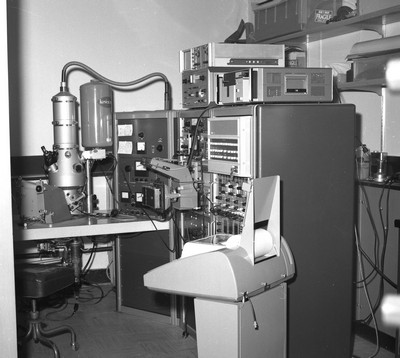An electron probe microanalyzer (EPMA) is an analytical instrument used to determine the chemical composition of small volumes of solid materials rapidly, non-destructively, and in situ. It works by focusing a beam of electrons with a diameter of less than five microns on a sample, which then emits X-rays characteristic of the chemical composition of the sample. Depending on analytical conditions and other factors, concentrations of elements from fluorine to uranium can be measured accurately at levels as low as 100 parts per million. New instrumentation is extending analytical capability to lighter elements such as beryllium, and to lower detection levels.
The Geological Survey of Canada acquired Canada’s first EPMA in 1962 as part of the expansion of its Ottawa-based laboratory capabilities to support fieldwork operations. Electron probe microanalysis has developed into the method of choice for quantitative mineral analysis, including the chemical variation in rock-forming minerals, and it is essential for the characterization of new minerals.
Electron probe microanalysis has supported Survey research into the search for diamonds and base metals, chemical age determinations, pressure-temperature-time evolution of rocks and minerals, and fluid–rock interaction. It is also used as a preparatory tool prior to other analytical methods including mass spectrometry and ion probe analysis (SHRIMP).
Category: Equipment and Instrumentation
Decade: 1960s


